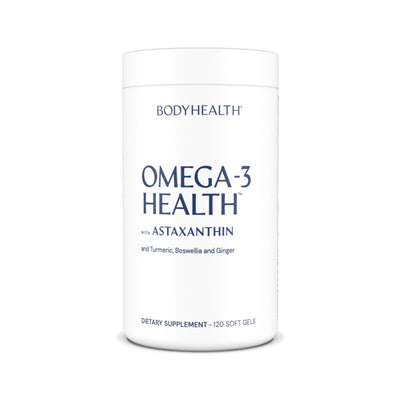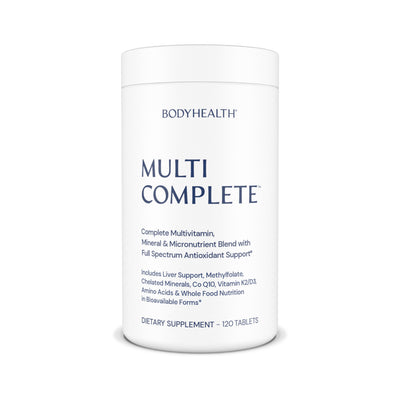HEALTHY SATURATED FATS VS TOXIC TRANS FATS
November 07, 2023 5 min read

In this article we covered the link between cholesterol and heart health or, more specifically, the lack of any link.
Now I want to go a bit further here, because there is something else that has gotten confused in this subject: saturated fats.
There is an idea that saturated fats raise cholesterol and so blood pressure, and this isn’t the case.
Your body needs saturated fats. About 25% of each of your cells are made from saturated fat. And they wouldn’t function without it.
Even more, it’s necessary if we want soft, healthy skin.
But there is another type of fat which has been confused with saturated fats, and which is very destructive: Trans Fats.
We aren’t hearing as much about them today, but they exist in many processed foods and we need to check for them as they cause inflammation in the blood vessels that does lead to high blood pressure.
So let’s see what these are and what they do.
First we’ll cover saturated fats.
Saturated Fats Are Vital To Life
Saturated fats have been blamed in the past for raised blood pressure, high LDL (“harmful” cholesterol levels) and heart disease.
This led to a nation-wide reduction in saturated fat intake and raised carbohydrate intake over the last 50 years or so.
It’s false. In fact, there is actually no evidence stating this.
The average consumption of butter (saturated fat) is about 4 lbs per person, per year in the US right now and heart disease is a big problem.
But in the early 1900’s it was about 14 lbs per person and heart disease was nowhere near the problem it is now.
In fact, more recent studies have shown that most saturated fats actually help to balance cholesterol levels.
But they are not just not harmful, they’re actually quite vital. They make up nearly 25% of each cell in our body, and the cells would not be able to hold themselves together without them.
They’re also key to soft, smooth skin. And low saturated fats leads to drier, rougher skin.
Your body will even make them from other fats if needed and it can also break them down for energy when in excess. They are no problem at all.
So, whether you like butter or not, saturated fats are not your enemy.
Trans Fat, The Fat That Gave Saturated Fat A Bad Name
The two main types of fat are saturated and un-saturated, and they hold all other types within them except for one — Trans Fat.
Saturated fats are solid at room temperature and unsaturated fats are liquid. This is because unsaturated fats are missing one more more atoms that would hold them in a solid chain.
This is perfect because your cells need both of these. Saturated fats hold the cell walls together by being solid, and unsaturated fats create motion allowing nutrients and water to go into the cell and waste to come out so it doesn’t build up and kill the cell.
These fats form the wall around the cell called the bilayer which is made up of fat cells called phospholipids. These look like a two-tailed tadpole — one tail is saturated, holding the cells form, and one unsaturated, wiggling to allow things in and out.
But, while saturated fats like butter last a long time, unsaturated fats do not.
That doesn’t work for companies who want packaged food with a shelf life of many years.
So they took these unsaturated fats and added extra hydrogen atoms to them — this is the “hydrogenated oils” you’ve seen — that artificially made them solid at room temperature.
In essence, these are unsaturated fats that have been artificially made into saturated fats. And the body sees them both ways — as saturated and unsaturated.
But now we’ve made something very different than what we originally had — and it’s deadly for our cells.
So when these are in our diet, even just 2 grams per day are quite harmful to us.
When these “unsaturated” fats are added to our cells they aren’t able to move, because they’re solid.
So nutrients can’t come in and waste can’t leave. When too much of this is in our cells they’re not able to function. They can’t get their food or water or oxygen in.
And as waste is building up inside, because it can’t get out, the cell is constipated. Too much of this and it dies or goes cancerous.
We don’t want these.
Trans Fats Were Banned But They Still Exist
Now, trans fats have been banned in the US since 2018. Except… this ban is actually only on levels of 1/2 a gram or more per serving of food. If it’s less than half a gram per serving they can tell you that it’s zero.
This is one reason many processed foods have such small serving sizes.
Let’s take a bag of Doritos for example. How many people eat half or even a full bag of these when you get them, or any bag of chips?
Well, there are 16 servings in a bag. Each serving is 12 chips. So as long as there is less than 1/2 a gram per 12 chips they can technically say it’s zero. That can be just .49 grams per serving.
But who eats just twelve? Has anybody ever? No.
Eat 50 of these chips and you might have 2 grams of saturated fats now.
Eat the rest of the bag and we’re potentially looking at 6 or 7 grams of trans fats — this is NOT good for you.
And yet 2g per day of Trans Fats is considered dangerous.
These trans fats raise “bad cholesterol” levels more than almost anything else.
They do this by injuring blood vessels, because they’re toxic. The injury must then be “bandaged” and this is done with cholesterol.
They also raise inflammation throughout the body in the cells, and stop up the cells so they can’t release waste and die.
They raise cortisol levels which throw our other hormones out of balance.
They’re really just not good.
So, look at ingredients labels for anything that says hydrogenated or partially hydrogenated oils of any type.
If it’s there, I highly recommend you stay away from it.
And if you have had a lot of processed foods with Trans Fats in them, make sure you’re taking plenty of PerfectAmino to help with healing, as well as our Multivitamin to help undue the damage and get your cells healthy again.
I hope this helps.
Articles by Health Topic
Your Path To Better Health Starts Here!
From in-depth articles on nutritional benefits to updates on new product launches, stay informed and inspired on your journey to optimal health.
*These statements have not been evaluated by the Food and Drug Administration. These products are not intended to diagnose, treat, cure, or prevent any disease.



